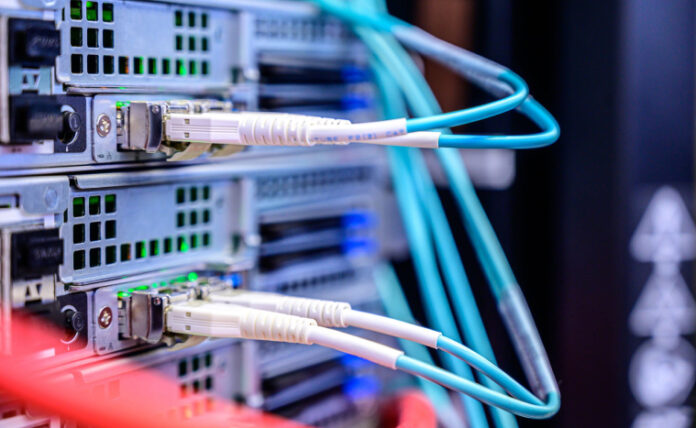Cable and internet are compound terms with various meanings depending on the context in which you mention them. Cable TV usually refers to companies offering home entertainment via a television broadcasting network that uses coaxial cables. Such networks allow their clients to access television channels and internet services via cable connections. Most cable and internet providers bundle the TV channels.
What is Cable?
Cable is precisely what the name suggests; connections that rely on coaxial cables to transmit data packets. Most parts of the US, including highly remote locations, have access to cable connections. In telecommunications, cable internet refers to a type of broadband internet. The connections rely on underground or aerial coaxial cable networks.
Read Also: Scholar Editing Facts You Need to Know
You should distinguish between cable internet, DSL, and fiber optics. DSL uses the traditional phone lines and cables to provide internet access, while fiber optics also relies on fiber optic cables. However, DSL is the traditional connection almost entirely phased out because of its limitations. Fiber optics is a sophisticated cable connection with the highest transmission speeds and is much better than conventional coaxial cable internet.
What is Internet?
The Internet is a web of computer networks. Users connect to the internet via computers, laptops, smartphones, and other devices. Cable and internet providers use coaxial cables, DSL, fiber optics, satellite, and wi-fi to connect your home to the internet. You don’t need cable to connect to the internet, as with wireless broadband. The internet offers access to servers and computers worldwide and uses unique protocols to allow data packet transfer.
When you use cable internet, you’ll connect to specific TV channels provided by the network. The provider will also offer a bandwidth plan, which determines how much you can use the internet (stream videos, play games, browse, send emails, and more). Some plans offer unlimited bandwidth, so you can use the internet without limitation. Homeowners can also use streaming services to access TV shows over the internet, effectively eliminating cable.
Differences between Cable and Internet
The differences between cable and internet are obvious and straightforward. Cable refers to a specific technology used to deliver internet access and television channels. The internet is a global network of computers and networks. You can connect to the internet via cable infrastructure, including traditional DSL telephone lines, coaxial cable networks, and fiber optics.
Other options include satellite and wireless broadband, which involves modems and routers. The term cable in telecommunications is loosely used for cable TV, while the internet often refers to streaming via wireless infrastructure. Both terms may fit in each other’s contexts, depending on your topic. Here are five key distinctions between cable and internet streaming services:
1. Cable Relies on Coaxial Cables
Cable internet and TV requires physical coaxial cable installation to work. Data packets are converted and transferred by twisted coaxial cables and then decoded once they reach their destination. Cable TV and internet were once the most efficient way to connect to the internet. They are broadband and support higher speeds than dial-up connections. Cables have recently been overtaken by wireless broadband and fiber optics.
2. Internet Streaming Is Wireless
Internet streaming doesn’t require coaxial cables, fiber optics, or other cable-based connections. They rely on wireless connections, which convert data packets into electromagnetic frequencies broadcasted and picked up by different devices. You can connect to wireless networks anywhere, provided you have a modem or modern devices like smartphones that feature portable hotspots.
3. Cable Is Best for Internet Bundling
Cable and satellite TV offer classic packages and are easily bundled with internet access. You can access the best TV channel variety from cable providers and leverage high-speed internet for general browsing and other services. Streaming services also offer internet access and an excellent variety of live TV channels. The old-school internet TV bundles and discounts remain a massive incentive for cable.
4. Cable Requires Installation & Maintenance
Setting up a streaming service doesn’t require much hardware. You can watch directly on your smartphone or set up a local wi-fi using a modem and router. As such, streaming services are theoretically available everywhere. Cable TV requires installing coaxial cables and boxes. You must also schedule maintenance and will have various instances of assisted troubleshooting. Any problem with the lines and boxes can impact your connections.
5. Wireless Streaming Is Fast & Flexible
Cable internet can achieve great speeds, but not as fast as wireless broadband or fiber optics. Wireless streaming offers premium-quality graphics, typically at a lower price. Contracts can also be flexible and easy to scale up or down. Cable internet and TV offer fixed plans, and price increases can be drastic. People seeking instant access to the internet and favorite TV shows can leverage wireless streaming services, while cable suits office and home usage.
The Best Cable and Internet Providers
Cable TV and internet is still the popular choice for most Americans. Streaming services keep expanding and are the future of entertainment. Each option has unique merits and drawbacks. Whichever option you choose, work with reputable cable and internet providers that can guarantee secure connections and top speeds. You can use platforms that link you to leading home internet, cable, and security providers.




































